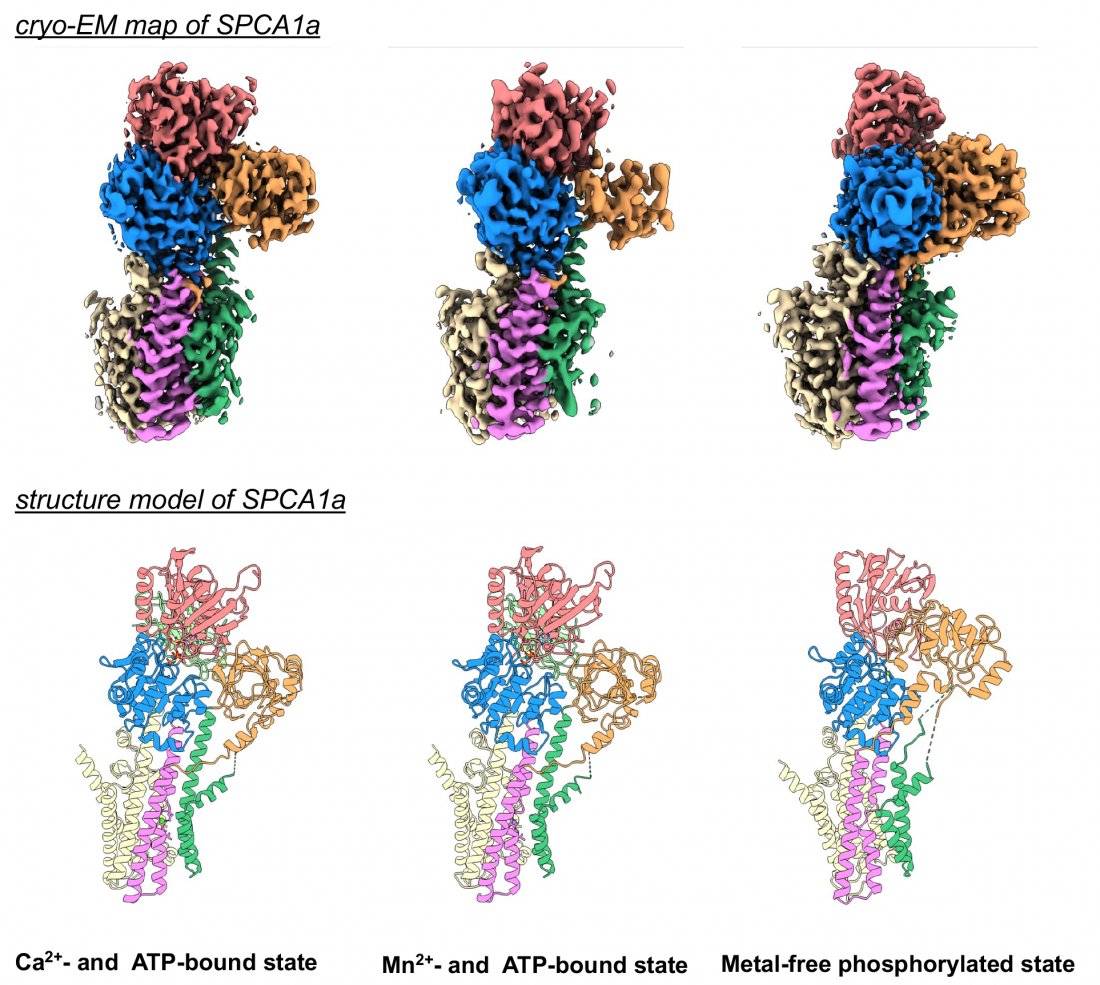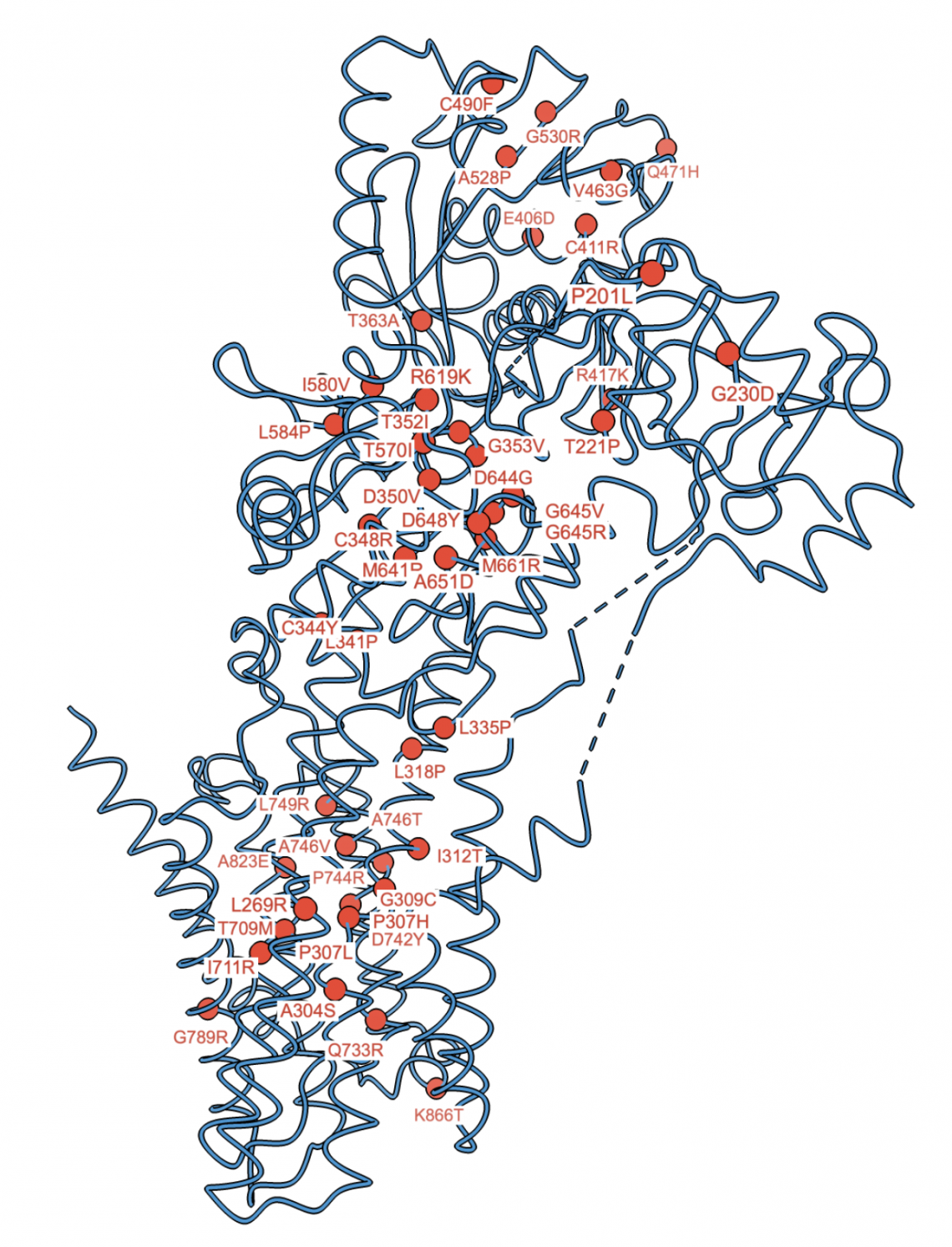Cryo-EM maps and structures of human SPCA1a in three intermediate states.
Hailey-Hailey disease is a rare, inherited condition characterized by patches of blisters appearing mainly in the skin folds of the arm pits, groin and under the breasts. It is caused by a mutation in the gene that codes for a specific protein involved in the transportation of calcium and manganese ions from the cell cytoplasm and into a sac-like organelle called the Golgi apparatus. Scientists at Tohoku University, together with colleagues in Japan, have uncovered some aspects of this protein's structure that could help researchers understand how it works. The findings, published in the journal Science Advances, help build the foundations for research into finding treatments for Hailey-Hailey disease and other neurodegenerative conditions.
The protein the team studied is called secretory pathway Ca2+/Mn2+-ATPase, or SPCA for short. It is located in the Golgi apparatus, a cellular sac-like structure that plays a crucial role in protein quality control before they are released into cells. The Golgi apparatus also acts like a sort of calcium ion storage container. Calcium ions are vital for cell signalling processes and are important for proteins to function properly, so maintaining the right calcium ion balance inside cells is necessary for their day-to-day activities. In addition to calcium ion transport, SPCA is also involved in preventing the toxic build-up of manganese inside the cell cytoplasm, which can affect the survival of nerve cells. Until now, scientists have not known much about SPCA's structure or how it works.
"Our study succeeded in determining high-resolution 3D structures of human SPCA1a using a cryo-electron microscopy technology," says Tohoku University structural biologist Kenji Inaba, who led the research. "The analysis revealed how SPCA1a binds to calcium and manganese ions and transports them into the Golgi lumen. We also mapped where mutations on the protein can cause functional defects and eventually lead to Hailey-Hailey disease. Thus, the knowledge about the mechanisms of SPCA1a regulation revealed by our study will be of physiological and medical significance."
Cryo-electron microscopy studies samples frozen at very low temperatures, with the protein molecular motions immobilised. Proteins normally move and change shape as they go about their normal functions, but whatever the microscope captures can only reveal one specific state. The Tohoku study used the technique to elucidate three of the protein's states: as it is bound to calcium and manganese ions, as it is bound to the energy-providing molecule ATP, and in its metal-unbound phosphorylated state. So it gave three snapshots of states the protein would normally switch between.
"Although the study has provided many important insights into SPCA1a, it is not enough to describe the whole picture," explains Inaba. "A comprehensive understanding of the transport of calcium and manganese by SPCA will reveal how these ions are properly balanced inside cells and could provide insights into how mutations in the protein cause Hailey-Hailey disease and other neurodegenerative disorders."




